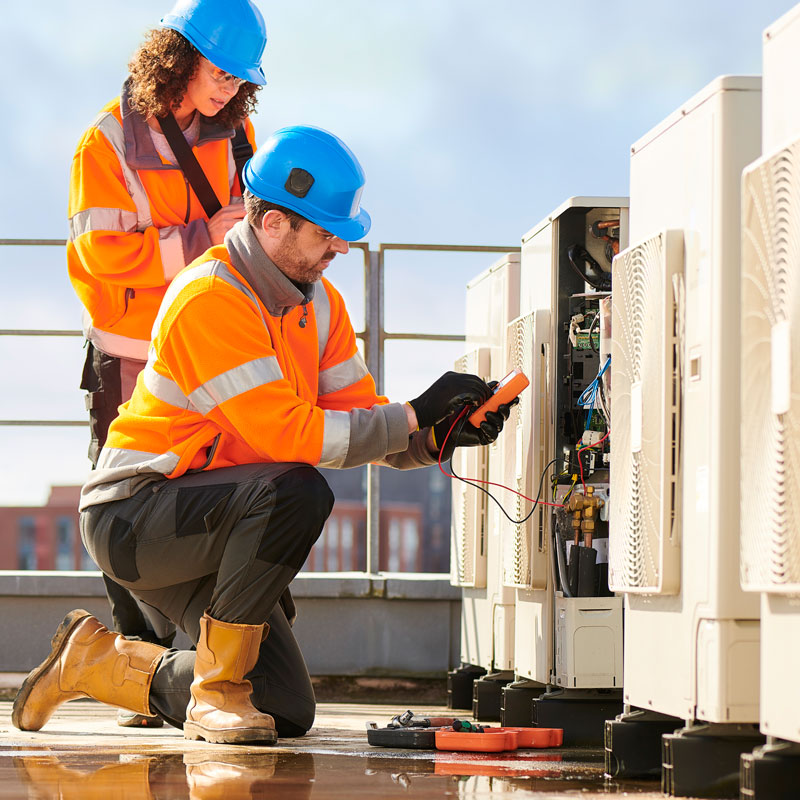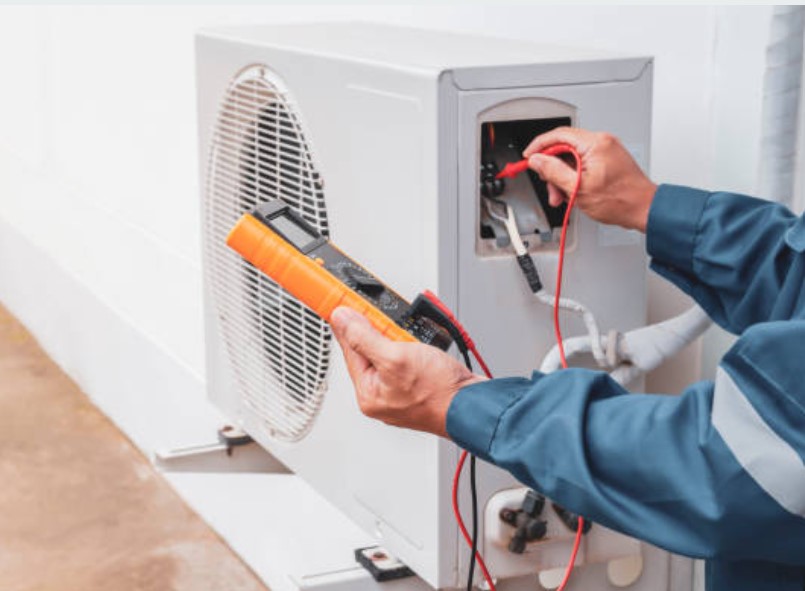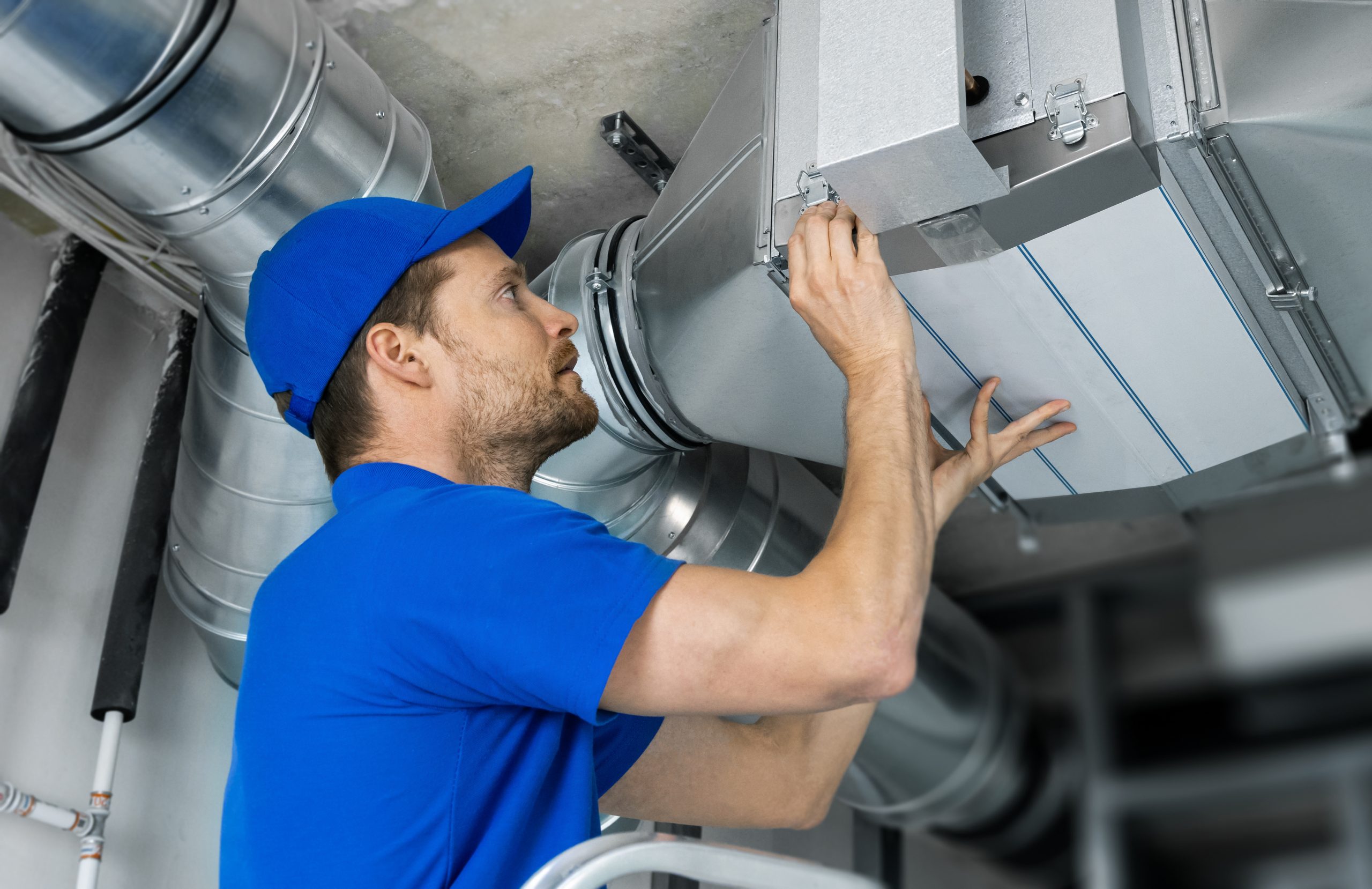Your Ultimate Checklist for Effective heat pump service
Your Ultimate Checklist for Effective heat pump service
Blog Article
Just How a Heatpump and Furnace Collaborate to Enhance Your Home's Heating Performance
Recognizing exactly how a heatpump and heater work with each other is crucial for home owners seeking efficient home heating services. Each system has its strengths, supplying a balanced strategy to home comfort. The heat pump masters moderate temperature levels, while the furnace supplies rapid heat during severe cold. This synergy not only reduces energy expenses but additionally enhances the life-span of both appliances. What aspects influence this partnership, and how can house owners maximize their benefits?
Recognizing Heat Pumps: Just How They Work
Although many individuals may be strange with their inner functions, warmth pumps play a vital function in contemporary heater. These gadgets operate by moving warmth from one area to one more, utilizing the principles of thermodynamics. In colder months, a warm pump extracts warm from the outside air, ground, or water, and transfers it indoors to heat the living space. Alternatively, during warmer months, it can reverse the process, serving as an ac system by removing warmth from inside to the outside.Heat pumps include an evaporator, compressor, growth, and condenser shutoff. The cooling agent within the system absorbs warmth as it vaporizes at low temperature levels and stress. The compressor then increases the pressure and temperature level of the refrigerant, permitting it to release heat as it condenses. This effective procedure can considerably lower energy intake contrasted to conventional heating techniques, making heatpump a lasting choice for climate control in homes.
The Function of Heaters in Home Heating
Furnaces play an important role in home heating by providing a dependable source of heat during the chillier months. They run by generating warm via combustion or electric resistance, distributing it throughout the home using ducts or radiant systems. The effectiveness of a furnace is often gauged by its Annual Fuel Application Performance (AFUE) ranking, which suggests exactly how successfully the system converts fuel into heat.Furnaces can utilize various power sources, including all-natural gas, oil, propane, or electrical energy, allowing homeowners to select one of the most appropriate alternative for their requirements. Unlike heatpump, which may battle in extreme cold, heating systems maintain consistent efficiency, making certain that indoor temperatures stay comfortable despite outdoor problems. Additionally, modern heating systems often come outfitted with advanced technology, such as wise thermostats and variable-speed blowers, improving their performance and responsiveness. This convenience makes heaters an important component in comprehensive home heating techniques.

Advantages of Using Both Equipments With Each Other
Combining the staminas of both heating systems and warmth pumps can cause a more efficient and effective home heating option. Making use of both systems allows house owners to make the most of the warm pump's power efficiency throughout milder temperatures while counting on the heater for even more severe cold conditions. This twin strategy can substantially decrease power expenses, as heatpump take in less electrical power than conventional heating techniques when temperatures are moderate.Additionally, making use of both systems together can boost comfort degrees in the home. Warmth pumps can provide regular, even heating, while heaters can quickly raise ambient temperatures when required. The assimilation of both systems can expand the life expectancy of tools by decreasing wear and tear on each system, as they share the work. Ultimately, home owners can enjoy a balanced, economical home heating option that changes flawlessly to varying climate condition, making certain a warm and welcoming home throughout the cold weather.
Exactly How Warmth Pumps and Furnaces Enhance Each Other
When property owners integrate heatpump and heating systems, they create a corresponding heating unit that makes the most of effectiveness and comfort. Warmth pumps run by transferring warm from the outside air or ground, making them very efficient in moderate climates. They excel during milder temperatures, providing cost-effective heating. On the other hand, furnaces create warmth via burning or electrical resistance, supplying solid, immediate heat during extreme cool conditions.The combination of these two systems enables vibrant changes based on temperature level fluctuations. During warmer months or milder winter months days, the heatpump can take the lead, preserving power and decreasing expenses. As temperatures decrease, the heating system can effortlessly engage, making sure consistent warmth throughout the home. This synergy not only optimizes power use but also enhances the lifespan of both systems, as each system runs within its perfect performance array. With each other, they develop a balanced atmosphere that adjusts to differing environment demands.
Maximizing Performance: Tips for Homeowners
Home owners can boost their heating efficiency via several functional techniques. Establishing a regular maintenance timetable, integrating clever thermostat innovation, and executing reliable insulation and sealing services are crucial steps. These steps not only improve comfort however additionally decrease energy costs.
Routine Maintenance Arrange
To guarantee optimal home heating performance, establishing a routine maintenance routine is crucial for any type of home. Property owners ought to prioritize routine inspections of both warm pumps and heaters to establish peak efficiency. This consists of transforming air filters every one to three months, as clogged filters can substantially reduce efficiency. Furthermore, organizing specialist upkeep at the very least yearly allows specialists to recognize and address prospective issues prior to they escalate. Homeowners need to additionally cleanse the heatpump's outdoor unit to prevent particles buildup that can impede airflow. By sticking to a routine upkeep schedule, home owners not only improve their furnace' effectiveness but additionally expand their lifespan, resulting in higher convenience and reduced power prices throughout the cooler months.
Smart Thermostat Integration
Integrating a clever thermostat into a home heating unit can greatly improve energy efficiency, specifically as it enables specific control over temperature level settings. These tools can learn the property owner's timetable and preferences, immediately adjusting the temperature to optimize convenience while lessening energy use. They can decrease home heating during times when the home is unoccupied, decreasing unnecessary usage. Numerous smart thermostats additionally supply real-time energy use data, enabling home owners to make educated choices regarding their heating behaviors. Furthermore, remote accessibility through smart device applications allows individuals to adjust settings from anywhere, making certain the home is warm upon return. In general, wise thermostat assimilation not only enhances convenience yet substantially contributes to power financial savings and performance.
Insulation and Sealing Solutions
Smart thermostats play an essential function in energy effectiveness, but their performance can be significantly improved by correct insulation and sealing solutions. House owners must prioritize shielding walls, floorings, and attic rooms to minimize heat loss. Top notch insulation materials, such as spray foam or fiberglass, can significantly enhance thermal resistance. In addition, his comment is here sealing gaps around windows, doors, and ducts avoids chilly air infiltration and warmth escape. Weatherstripping and caulking are effective methods for dealing with these leakages - heat pump service. Routine evaluations for air leaks, together with using blower door tests, can help identify trouble locations. By purchasing insulation and securing, home owners can maximize the efficiency of their heater, inevitably bring about lowered power consumption and lower energy costs
Typical Myths About Warmth Pumps and Furnaces
What misunderstandings border heatpump and heaters? Numerous individuals incorrectly think that heatpump are inefficient in colder environments. Actually, contemporary heat pumps are designed to run effectively even in reduced temperatures, providing reliable home heating throughout wintertime. Another usual myth is that furnaces are constantly a lot more reliable than warm pumps. This depends on the details energy resources and effectiveness rankings of the systems in inquiry. Some may also assume that utilizing both systems simultaneously is unneeded, however in reality, this mix can enhance heating efficiency, particularly during extreme weather problems. Furthermore, individuals commonly assume that heat pumps need constant upkeep, when in truth, they have similar maintenance requires to traditional heater. By exposing these misconceptions, property owners can make more educated choices concerning their home heating choices, inevitably causing enhanced convenience and energy effectiveness in their homes.
Upkeep Factors To Consider for Combined Systems

Regularly Asked Questions
Can Warm Pumps Job Effectively in Very Cold Climates?
Heatpump can struggle in very cool climates because of lowered efficiency and warm removal constraints. However, improvements in modern technology have resulted in designs made for better performance in such conditions, improving their stability in harsh environments.
How Long Do Heat Pumps and Furnaces Usually Last?
Warm pumps normally last 15 to two decades, while heaters have a life-span of 15 to three decades. Normal upkeep can expand their long life, making certain reliable procedure and minimizing the requirement for premature replacements.

What Is the Typical Price of Setting Up Both Equipments?
The average expense of mounting both a heatpump and a furnace generally varies between $5,000 to $10,000 - heat pump service. Aspects affecting this cost include system size, setup complexity, and local website link labor prices
Are There Tax Obligation Rewards for Using Energy-Efficient Home Heating Systems?
Lots of homeowners inquire concerning tax incentives for energy-efficient heating unit. Numerous federal and state programs often provide credit scores or discounts, urging the adoption of lasting modern technologies to reduce energy usage and advertise ecological obligation.
Exactly how Do I Choose the Right Size Heatpump and Furnace?
Choosing the right dimension heatpump and heater includes determining the home's square footage, considering insulation quality, and assessing local climate. Consulting a professional can ensure optimal system efficiency and power Click Here performance based upon details requirements. heat pump service. Understanding just how a warm pump and furnace job together is crucial for home owners seeking efficient home heating options. In chillier months, a heat pump extracts warmth from the outdoors air, ground, or water, and transfers it inside your home to warm up the living space. When house owners incorporate warm pumps and heaters, they develop a complementary heating system that takes full advantage of effectiveness and comfort. Warmth pumps run by transferring warmth from the outdoors air or ground, making them highly efficient in modest climates. Heat pumps can battle in very cold environments due to minimized efficiency and warmth removal limitations
Report this page